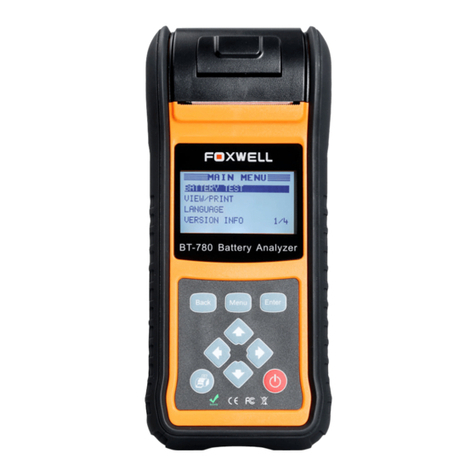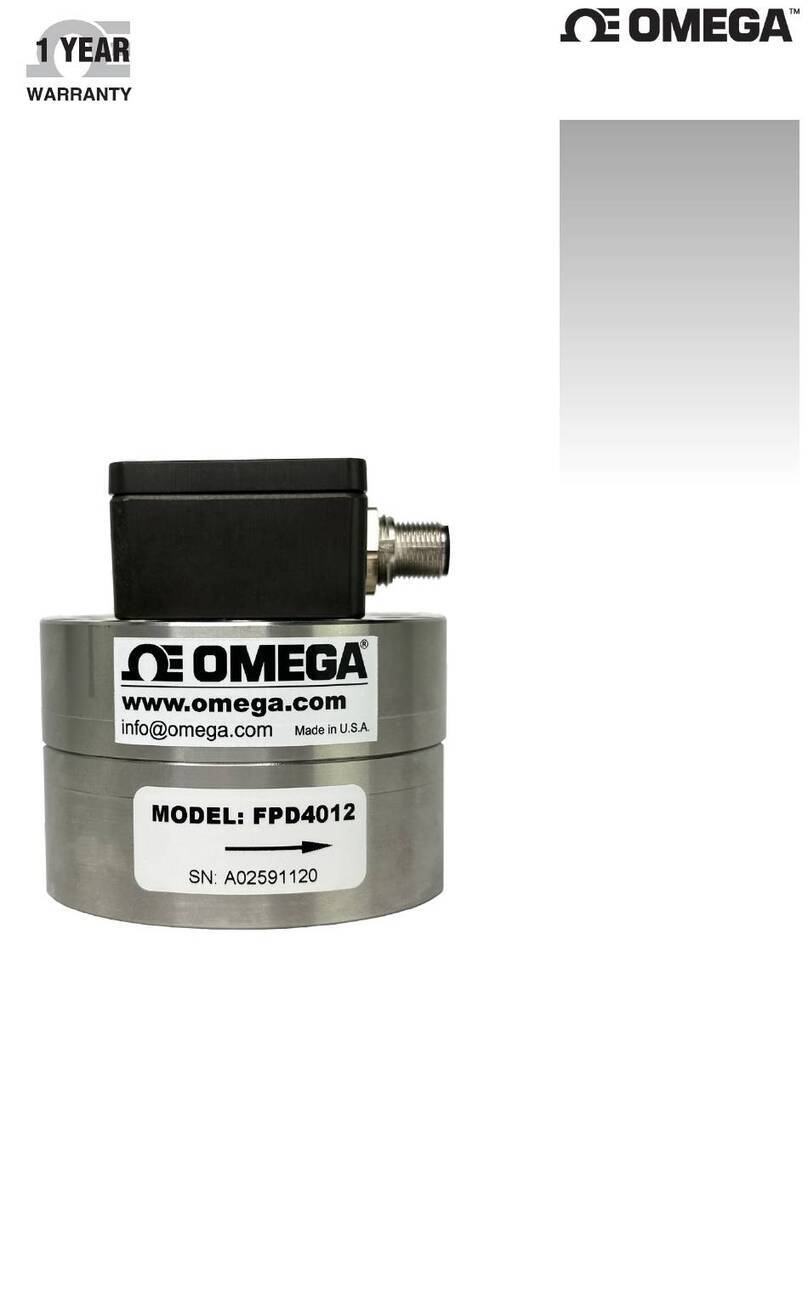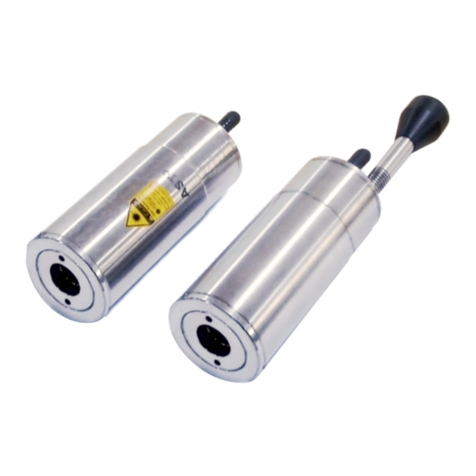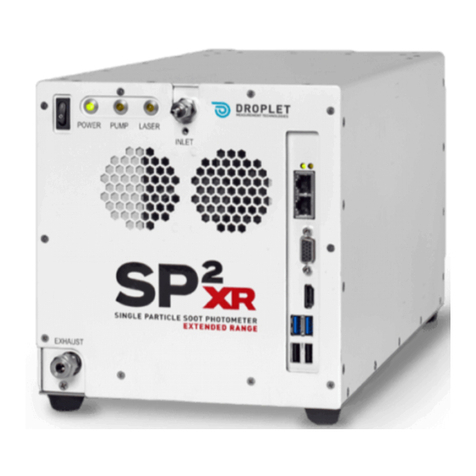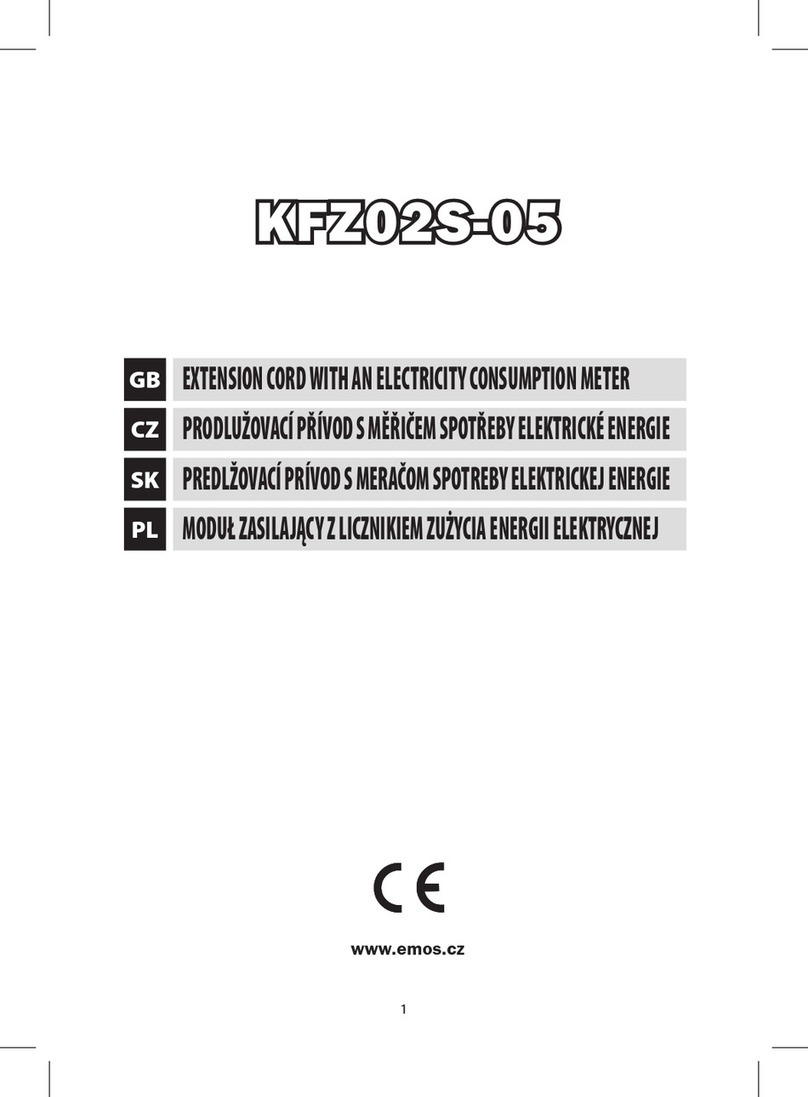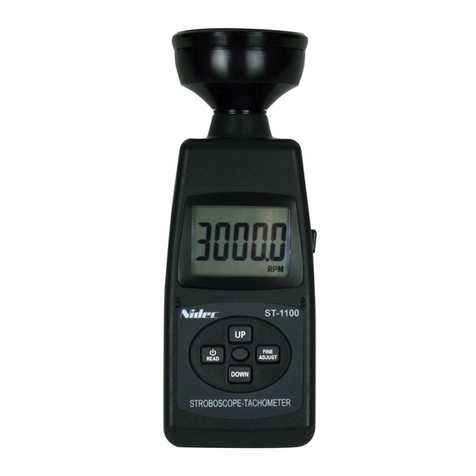Micro Direct MD Spiro Pneumotrac User manual

Pneumotrac
Model MD6800
Instruction for Use
Current Edition (Issue 2, 27-Jul-2020) Cat. No. 09000
Micro Direct, Inc. 803 Webster Street Lewiston, ME 04240

Indications for Spirometry
Spirometry has been used extensively to measure lung function capability and to
recognize and treat many diseases associated with the impairment of healthy lung
functions. Spirometry today provides great insight into the status of any person’s
health.
Generally speaking, spirometry is a simple diagnostic tool used to define a subject’s
lung condition. The major indications for spirometry are:
✓Dyspnea (shortness of breath)
✓Exercise induced coughing
✓Chest tightness
✓Smokers over 45 years of age (NLHEP recommendations)
✓Obesity
✓Pre-operative testing
✓Occupational exposure to dust and/or chemicals
✓Ongoing assessment of patients receiving bronchodilator treatments
✓Determination and/or documentation of pulmonary disability
✓Asthma diagnosis
✓Pre-existing pulmonary disease
✓Frequent colds
✓Assessment of congestive heart failure
CPT Codes for Spirometry
94010 - Spirometry Complete
Includes graphic record total and timed vital capacity, expiratory flow rate
measurement (s) with or without maximal voluntary ventilation
94060 - Bronchodilation Responsiveness
Spirometry as in 94010, pre-and post-bronchodilator or exercise
94070 - Bronchospasm Provocation Evaluation
Multiple spirometric determinations after bronchodilator with spirometry as in
94010
94150 - Vital Capacity
Total (separate procedure)
94200 - Maximal Voluntary Ventilation
Maximum breath capacity
94375 - Flow Volume Loop
Respiratory Flow Volume Loop
95070 - Inhalation Bronchial Challenge Testing
(Not including necessary pulmonary function tests), with histamine, methacholine
or similar compounds.
94464 - Bronchodilator Administration
Demonstration and/or evaluation of patient utilization of an aerosol generator,
nebulizer and meter dose inhaler or IPPB device
Diagnosis and ICD-10-CM Codes on back cover

Table of Contents
1. Main Components of the Pneumotrac............................1
1.1 Features of the Pneumotrac.....................................1
2. Setting Up the Pneumotrac............................................2
3. Operating Instructions....................................................3
4. Power Management.......................................................3
5. Cleaning & Hygiene.......................................................3
5.1 Preventing Cross-Contamination of Subjects...........3
5.2 Inspection of the Pneumotrac...................................4
6. Fault Finding Guide .......................................................5
7. Customer Service..........................................................6
8. Consumables and Accessories......................................6
9. Disposal.........................................................................7
10. Explanation of Symbols ...............................................7
11. Device Description and Indications for Use..................8
12. Technical Specification................................................9
13. Contraindications, Warnings, Precautions and Adverse
Reactions .........................................................................10
14. CE Notice ..................................................................11
15. FDA Notice................................................................12
16. EU Declaration of Conformity.....................................13
17. Guarantee..................................................................13

1
1. Main Components of the Pneumotrac
Figure 1 Main components of Pneumotrac
1
USB Flash Drive Containing Spirotrac. Reference Spirotrac
Instructions For Use for Details
2
USB Cable
3
Pneumotrac Base
4
Flowhead Connection Tubing
5
Flowhead
6
SpiroSafe Viral/Bacterial Filter
Note: Computer not supplied
1.1 Features of the Pneumotrac
•Fleisch type pneumotachograph to measure flow
•Ambient temperature sensor
•USB powered
•LED power indicator
•Soft pouch to store Pneumotrac

2
2. Setting Up the Pneumotrac
Figure 2
1. Remove USB drive from packaging.
2. Insert USB drive into USB port on computer.
3. Browse USB drive and click Setup.
4.Select Install Spirotrac. Follow on-screen instructions to complete
installation. Further details are provided in the Spirotrac
Instructions for Use supplied with the software.
5.Close installation and select the Spirotrac icon from the desktop.
6.Connect Pneumotrac to the computer using the USB cable (via
ports marked with the symbol).
7.The green LED on the front indicates power is on.
8.Connect one end of the flowhead connection tubing to the
Pneumotrac base.
9.Connect the other end of flowhead tubing to the flowhead.
If the device has just been unpacked or transported, ensure it is left
sitting, fully powered to reach room temperature before testing.

3
3. Operating Instructions
The Pneumotrac works with the Spirotrac software. Spirotrac must be
installed on the PC to begin testing. Refer to Spirotrac Instruction for Use
for details on:
•Installing Spirotrac Software
•Entering Subject Data
•Conducting Spirometry Testing
•Printing a Report
•Calibration Verification
4. Power Management
1. The Pneumotrac device is powered over USB.
2. The green LED on the front of the device indicates that it is
powered.
3. The Pneumotrac may be safely powered down by disconnecting
the USB cable from the device.
5. Cleaning & Hygiene
5.1 Preventing Cross-Contamination of Subjects
A spirometer is not designed or supplied as a ‘sterile’device. Micro Direct
intends that a new SpiroSafe, viral/bacterial, filter be used for every
subject to prevent cross contamination. Using a new SpiroSafe provides
a significant level of protection of the subject, the device and the user
against cross contamination during spirometry maneuvers.
The interior of a flowhead does not require decontamination where a new
SpiroSafe is used for each subject. The outside surfaces of the device
and flowhead tube may be cleaned with a 70% isopropyl alcohol
impregnated cloth to remove any visible soiling and for low level
disinfection.
Where the user suspects the flowhead has become contaminated or
where local risk assessment identifies a need for higher level
decontamination, then it should be cleaned as per ‘Cleaning and Hygiene’
instructions on the MDSpiro website.

4
5.2 Inspection of the Pneumotrac
Visual inspection is recommended on a routine basis. Remove the
flowhead cone and flowhead end cap from the flowhead (figure 3).
Examine flow conditioning mesh filters for damage or contamination. If
they are damaged or blocked, discard and replace with new parts.
Examine the O-rings on the Fleisch element and replace if damaged. Re-
assemble the cone and end cap. It is recommended that an accuracy
check is carried out following cleaning and re-assembly as recommended
in the ATS/ERS 2019 guidelines.1
Figure 3: Flowhead Assembly
1
Flowhead Complete
2
Flowhead End Cap
3
Flow Conditioning Mesh
4
Fleisch Element Assembly
5
‘O’Rings
6
Pressure Tapping
7
Flowhead Cone
Lubrication: Silicone Grease
1 Derived from terminology and guidance taken from ATS/ERS Standardization of
Spirometry 2019 Update Am J Respir Crit Care Med 2019 Vol 200, Iss 8 pp e70-e88

5
6. Fault Finding Guide
Problem Fault
Symptoms
•Accuracy check variations > ± 2.5%
•False readings suspected
Possible
Solutions: (In
probable order)
•Recheck accuracy (Section Operating
Instructions).
•Was the correct syringe volume selected?
•Flowhead conditioning mesh missing or
blocked.
•Flow head pressure tapping holes blocked.
•Flowhead fleisch element assembly sealing ‘O’
rings damaged.
•Flowhead fleisch element assembly blocked.
•Cold syringe –ensure syringe is in its test
environment for at least an hour before use.
•Internal tubing from pressure ports on device is
blocked –contact support.
•Electronics failure –contact support.
Problem Fault
Symptoms:
•Test begins automatically.
•Volume accumulates automatically without the
subject blowing.
•Very small VC or FVC test displayed.
Possible
Solutions: (In
probable order)
•Flowhead and/or tubing not stationary at the
start of the test. Hold them steady until the
‘Blow Now’prompt appears.
•Restart the test routine.
Problem Fault
Symptoms:
•Rocking Pneumotrac Base.
Possible
Solutions: (In
probable order)
•Check for damaged or missing feet
•If any of the feet are damaged or missing,
replace both feet.
Problem Fault
Symptoms
•Reversed or no volume measurements
Possible
Solutions: (In
probable order)
•Ensure tubing is connected correctly.
•Ensure the flowhead connecting tube is not
pinched or trapped.

6
7. Customer Service
Service and repairs should be carried out only by the manufacturer or by
Service Agents approved by the manufacturer. Contact information may
be found on the bottom of this page.
Any serious incident that has occurred in relation to the device should be
reported to the manufacturer or its Authorized Representative and the
Regulatory Authorities of the country. Refer to the contact information
found on bottom of this page
8. Consumables and Accessories
Cat. No.
Description
3385
SpiroSafe Viral/Bacterial Filters (100)
3304
Nose Clips (20)
3325
3-Liter Calibration Syringe
77933
Flow Conditioning Mesh
79192
Flowhead Connection Tube
48-70
Protex Disinfectant Wipe
To place an order for consumables and accessories, for service/repair or
for general questions please contact Micro Direct at:
Toll Free:
1-800-588-3381
Telephone:
207-786-7808
Fax:
207-786-7280
Email:
Website:
www.mdspiro.com

7
9. Disposal
The device must be taken to separate collection at the product end-of-life.
Do not dispose of these products as unsorted municipal waste.
Used SpiroSafe filters constitute minimally soiled waste from human
healthcare and should be disposed of in line with local requirements.
SpiroSafe filters are made from impact polystyrene.
10. Explanation of Symbols
Type B equipment
Class II
VA
Power Rating
Direct Current
Instructions for Use; operating instructions
Manufacturer
Date of Manufacture (include date in format yyyy-mm-
dd)
USB connector
The device must be taken to separate collection at the
product end-of-life. Do not dispose of these products as
unsorted municipal waste.
Fragile, handle with care

8
Keep Dry
Do not-reuse
Non sterile
Recycle
QR code - matrix bar code. All information in the bar
code is included in the text under it
11. Device Description and Indications for Use
The Pneumotrac is a spirometer which measures subject respiratory
parameters including but not limited to VC, FVC, FEV1, PEF and MVV. It
is designed for desktop use. A Fleisch flowhead is used for testing and
has a resting location on the device. The primary indication for the use of
the Pneumotrac is the simple assessment of respiratory function through
the measurement of dynamic lung volumes, i.e., spirometry in association
with Spirotrac PC software by medical professionals trained in respiratory
and lung function testing on adults and pediatrics, 5 years and older, in a
variety of professional healthcare environments, e.g., primary care,
hospitals and occupational health centers
Note: The measurements obtained from a lung function test form part of
the various findings of a physician in the detection, diagnosis and control
of chest diseases.

9
12.Technical Specification
Product
Pneumotrac Spirometer
Model
MD6800
Flow Detection Principal
Fleisch type pneumotachograph
Volume Detection
Flow integration sampling @ 100 Hz
Volume Accuracy
Within ± 2.5%
Flow Measurement
Range
Max flow rate ± 960 L/min (± 16 L/s)
Min. flow rate ±1.2 L/min (± 0.02 L/s)
PEF Accuracy
Within ± 10%
Back Pressure
Less than 0.1 kPa/L/sec @ 14 L/sec
(ATS/ERS 2005)
Operating Humidity
Range
30% - 75%
Operating Temperature
range
ISO26782 limits: 62.6 –98.6oF
Design limits: 50 –104o F
Ambient Pressure Range
850hPa –1060hPa
Performance Standards
the Pneumotrac Meets or
Exceeds
ATS/ERS 2019, ISO 23747:2015 &
ISO 26782:2009
Safety Standards
EN60601-1:2006 + A1:2013
EMC Standards
EN 60601-1-2:2015
QA/GMP Standards
EN ISO 13485, FDA 21 CFR 820, CMDR
SOR/98-282, JPAL, MDSAP
Dimensions
6.3” (Length) x 3.75” (Width) x 4.5” (Height)
Weight
1 Pound 3 Ounces
Communications
USB 2.0 / 3.0
Power Supply
5V DC via USB

10
13. Contraindications, Warnings, Precautions and
Adverse Reactions
1. No modification of this equipment is allowed. Any unauthorized
changes to the Pneumotrac device may compromise product
safety and/or data and as such the manufacturer cannot be held
responsible and the device will no longer be supported.
2. The Pneumotrac is not designed as a sterile device. Always follow
the safety guidelines given by the manufacturer of cleaning and
disinfectant chemicals.
3. For the device to be used as intended, there is no requirement to
clean the supporting computer. If cleaning is required to remove
visible soiling, this should be done as per the computer
manufacturer’s instructions.
4. Spirometry is a valuable tool that provides important information to
clinicians which is used together with other physical findings,
symptoms and history to reach a diagnosis (ATS/ERS 2019).
5. When using the Pneumotrac, ensure the flowhead connecting tube
is not pinched or trapped as spirometry results may appear to be
inverted.
6. Take care not to block the mouthpiece with the tongue or teeth
during testing. A ‘spitting’action or cough will give false readings.
7. Subject fatigue may occur during spirometry testing depending on
the subject’s characteristics e.g., age, health status. For safety
reasons, testing should be preferably done in the sitting position,
using a chair with arms and without wheels. Subject may also take
a break between tests.
8. All values displayed are expressed in BTPS values.
9. Time zero is determined using the back-extrapolated method, from
the steepest part of the curve.
10.Do not expose the Pneumotrac to liquids.
11.The Pneumotrac should not be used in the presence of flammable
liquids or gases, dust, sand or any other chemical substances.
12.All spirometry standards recommend checking the accuracy of lung
function measuring devices daily with a 3-L syringe to validate the
instrument is measuring accurately. The Pneumotrac should never
be outside accuracy limits. Accuracy should be checked after
cleaning or disassembling the spirometer for any reason, after
adjusting calibration or if the flowhead or device has been dropped.
13.Service and repairs should be carried out only by the manufacturer
or by Service Agents specifically approved by the manufacturer.

11
14.Maintenance must not be performed while the device is in use by a
subject.
15.Use of accessories or cables other than those specified or provided
by the manufacturer for this equipment could result in increased
electromagnetic emissions or decreased electromagnetic immunity
of the Pneumotrac and result in improper operation.
16.Non-medical equipment must be kept outside the subject
environment i.e., any area in which intentional or unintentional
contact between the subject and parts of the system can occur.
17.Portable RF communications equipment (including peripherals
such as antenna cables and external antennas) should be used no
closer than 12 inches (30 mm) to any part of the Pneumotrac,
including cables specified by the manufacturer. Otherwise,
degradation of the performance of this equipment could result.
18.Use of this equipment adjacent to or stacked with other equipment
should be avoided because it could result in improper operation. If
such use is necessary, this equipment and the other equipment
should be observed to verify they are operating normally.
19.The applied part is the flowhead. This along with the SpiroSafe
filter, are the contact points for the subject during a spirometry
session. There are no adverse effects if the subject comes into
contact with any other part of the Pneumotrac device.
14. CE Notice
Marking by the symbol indicates compliance of the Model 6800
Pneumotrac to the Medical Devices Directive of the European
Community.
The Pneumotrac is intended for use in a variety of professional
healthcare environments, e.g., primary care, hospital wards and
occupational health centers, except for near active high frequency
surgical equipment and the RF shielded room of an ME system for
magnetic resonance imaging, where the intensity of electromagnetic
disturbance is high. The customer or the user of the Pneumotrac should
be assure it is not used in such an environment.
The Model 6800 Pneumotrac has been tested in accordance with:
EN60601-1:2006 + A1:2013 –Medical electrical equipment. General
requirements for basic safety and essential performance.
EN 60601-1-2:2015 Medical electrical equipment –Part 1-2: General
requirements for basic safety and essential performance –Collateral
Standard: Electromagnetic disturbances –Requirements and tests.

12
EN 60601-1-2:2015 Emissions tests
Emissions
test
Compliance
Electromagnetic environment –guidance
RF
emissions
CISPR 11
Group 1
The Model 6800 Pneumotrac uses RF
energy only for its internal function.
Therefore, its RF emissions are very low
and are not likely to cause any interference
in nearby electronic equipment.
RF
emissions
CISPR 11
Class B
The Model 6800 Pneumotrac is suitable for
use in all establishments, including
establishments connected to the public
mains network (e.g. at doctor’s offices in
residential areas).
EN 60601-1-2:2015 Immunity tests
Immunity test
Test level
Compliance level Reached
Electrostatic
discharge (ESD)
EN 61000-4-2
Contact: ± 8 kV
Air: ± 2 kV, ± 4 kV,
± 8 kV, ± 15 kV
Contact: ± 8 kV
Air: ± 2 kV, ± 4 kV,
± 8 kV, ± 15 kV
Radiated RF
EN 61000-4-3
3 V/m
80MHz to 2700MHz
3 V/m
80MHz to 2700MHz
Proximity fields
from RF devices
EN 61000-4-3
9 to 28 V/m
385 to 5785 MHz
As per Table 9
EN60601-1-2:2015
9 to 28 V/m
385 to 5785 MHz
As per Table 9
EN60601-1-2:2015
Medical devices may be affected by mobile RF communications
equipment including cellular telephones and other personal or household
devices not intended for medical facilities. It is recommended that all
equipment used near the Pneumotrac comply with the medical
electromagnetic compatibility standard and to check before use that no
interference is evident or possible. If interference is suspected or
possible, switching off the offending device is the normal solution, as is
required in aircraft and medical facilities.
Medical electrical equipment needs special precautions regarding EMC
and needs to be installed and put into service according to the EMC
information provided.
15. FDA Notice
Caution: Federal law restricts this device to sale by or on the order
of a physician.

13
16. EU Declaration of Conformity
Product: 6800 Pneumotrac
The manufacturer hereby ensures and declares the above product
associated with these instructions for use, is designed and manufactured
in accordance with the following QMS regulations and standards.
•European Medical Devices Directive {MDD} 93/42/EEC, as
amended.
This device is classified as IIa per Annex IX of the MDD
also meets the provision of the Essential Requirements,
Anex I, via compliance with Annex II of the Medical Devices
Directive as per Article 11, section 3a, excluding point 4 of
Annex II.
•EN ISO 13485 Medical devices. Quality management systems.
Requirements for regulatory purposes
Certifying Body: British Standards Institute {BSI}.
BSI Notified Body #: 2797
Certificate Nos. CE 00772, MD 82182
Signed on behalf of Vitalograph (Ireland) Ltd.
17. Guarantee
Subject to the conditions listed below, the manufacturer and its
associated companies, (hereinafter called the Company) guarantee to
repair or at its option replace any component thereof, which, in the
opinion of the Company is faulty or below standard as a result of inferior
workmanship or materials.
The conditions of this Guarantee are:
1. This Guarantee shall only apply to hardware defects which are
notified to the Company or to its accredited distributor within 2
years of the date of purchase of the equipment, unless otherwise
agreed in writing by the Company.
2. Software (meaning computer software, or user installable
modules) is guaranteed for 90 days from the date of purchase.

14
3. The Company warrants the software when correctly used in
conjunction with the hardware will perform in the manner
described in the Company’s literature and user manuals. The
Company undertakes to rectify at no expense to the customer any
software failure notified with the period stated above, provided the
failure can be recreated and the software has been installed and
used in accordance with the user manual. Notwithstanding this
clause, the software is not warranted to be free of errors.
4. This Guarantee does not cover any faults caused by accident,
misuse, neglect, tampering with the equipment, use of
consumables items or parts not approved by the Company, or any
attempt at adjustment or repair other than by personnel accredited
by the Company, nor does it cover reinstatement of any
configuration changes caused by the installation of any software.
5. If a defect occurs, please contact the supplier from whom it was
purchased for advice. The Company does not authorize any
person to create for it any other obligation or liability in connection
with Vitalograph equipment.
6. This Guarantee is not transferable and no person, firm or
company has any authority to vary the terms or conditions of this
guarantee.
7. To the maximum extent of the law, the Company does not accept
liability for any consequential damages arising out of the use of, or
inability to use any Vitalograph equipment.
8. This Guarantee is offered as an additional benefit to the
Consumer’s statutory rights and does not affect these rights in any
way.

15
CD-10 Codes for Spirometry
Diagnosis
Code
Acute Bronchitis
J20.0-J20.9
Allergic Rhinitis, Other
J30.81-J30.89
Allergic Rhinitis, Unspecified
J30.9
Vasomotor and Allergic Rhinitis
J30.0-J30.5
Asthma, Mild, Intermittent
J45.20-J45.22
Asthma, Mild, Persistent
J45.30-J45.32
Asthma, Moderate, Persistent
J45.40-J45.42
Asthma, Severe, Persistent
J45.50-J45.52
Asthma, Unspecified
J45.901-J45.909
Cough Variant Asthma
J45.991
Other Asthma
J45.998
Cystic Fibrosis with Pulmonary
Manifestations
E84.10
Bronchiectasis
J47.0-J47.9
Encounter for Preprocedural
Respiratory Examination
Z01.811
Other Interstitial Pulmonary
Disease with Fibrosis in diseases
classified elsewhere
J84.17
Other Specified Interstitial
Pulmonary Disease
J84.89
Interstitial Pulmonary Diseases,
Unspecified
J84.9
Pneumoconiosis Due to Asbestos
and Other Mineral Fibers
J61

16
Pneumonitis
J67.0-J67.9
Pulmonary, Fibrosis
J84.10
Respiratory conditions due to
inhalation of chemicals, gases,
fumes and vapors
J68.0-J68.9
Respiratory conditions due to
unspecified external agent
J70.9
Sarcoidosis of the Lung
D86.0
Sarcoidosis of the Lung with
sarcoidosis of the lymph nodes
D86.2
Bronchiolitis, Acute
J21.0-J21.9
Bronchitis, Not Specified as
Acute or Chronic
J40
Bronchospasm, Acute
J98.01
Bronchospasm, Exercised
Induced
J45.990
Chronic Bronchitis, Simple
J41.0-J41.8
Chronic Bronchitis, Unspecified
J42
COPD
J44.0-J44.9
Cough
R05
Emphysema
J43.0-J43.9
Other Long Term (Current) Drug
Therapy
Z79.899
Shortness of Breath
R06.02
Systemic Sclerosis with lung
involvement
M34.81
Contact with and (suspected)
exposure to environmental
tobacco smoke (acute)
(chronic)**
Z77.22
Nicotine Dependence**
F17.200-F17.299

17
Tobacco Use (NOS)**
Z72.0
Occupational exposure to
environmental tobacco smoke**
Z57.31
Personal history of
nicotine dependence**
Z87.891
Smoking (tobacco)
complicating pregnancy,
childbirth, and the puerperium**
O99.330-O99.335
Wheezing
R06.2
**Use additional code after the primary diagnosis to identify any tobacco
use, dependence or exposure to tobacco smoke
Please Note: Information in this manual is subject to change without notice and
does not represent commitment on the part of the manufacture. The software
may be used or copied only in accordance with the terms of that agreement.
No part of the manual may be reproduced or transmitted in any form or by any
means, electronic or mechanical, including photocopying and recording for any
purpose without the written permission of the manufacturer.
This manual suits for next models
1
Table of contents
Other Micro Direct Measuring Instrument manuals
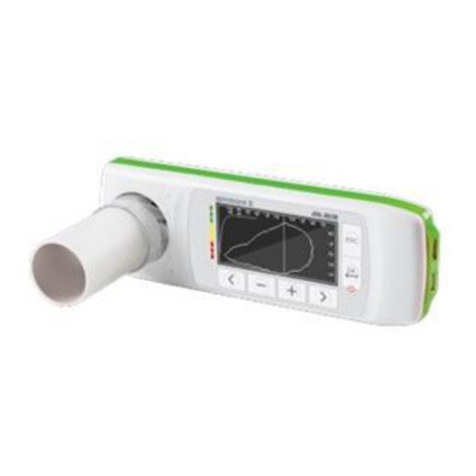
Micro Direct
Micro Direct MD Spiro SpiroBank II MD10 User manual

Micro Direct
Micro Direct MD SPIRO Micro MD6300 User manual
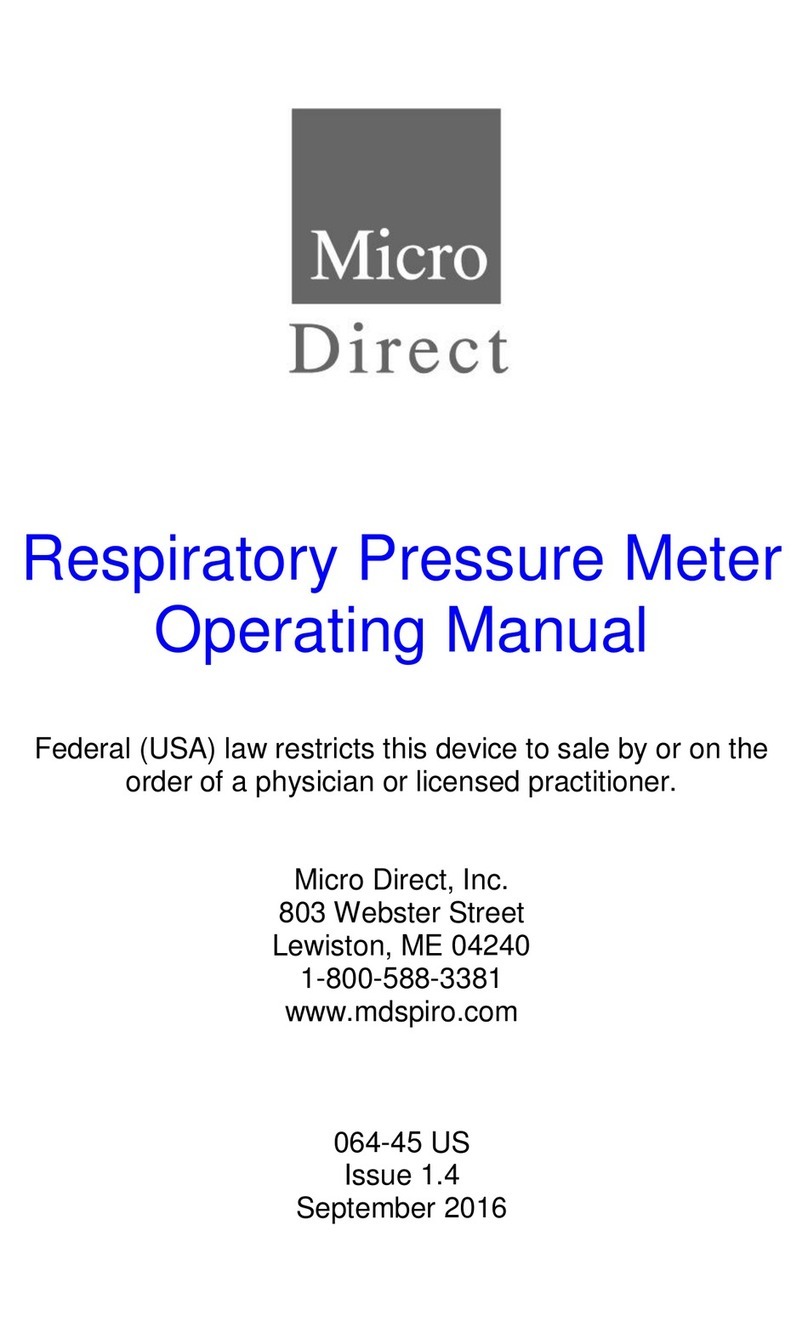
Micro Direct
Micro Direct MicroRPM User manual
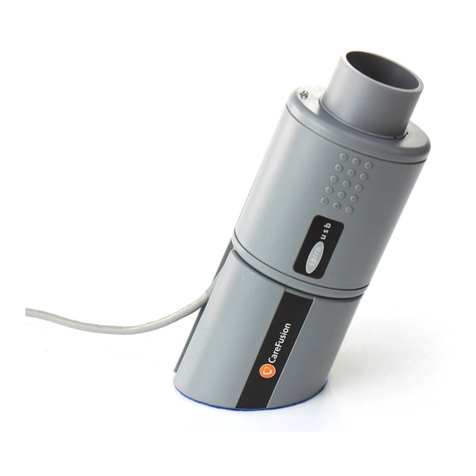
Micro Direct
Micro Direct SpiroUSB User manual
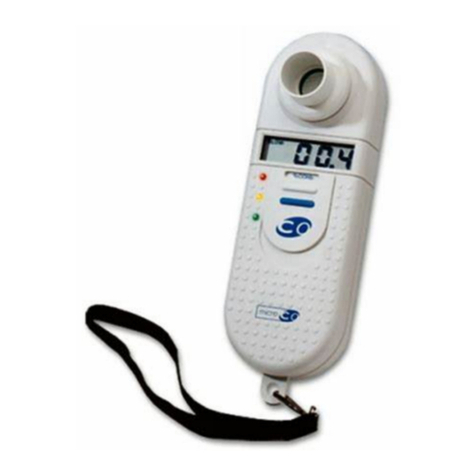
Micro Direct
Micro Direct MicroCO User manual

Micro Direct
Micro Direct PulmoLife User manual
Popular Measuring Instrument manuals by other brands
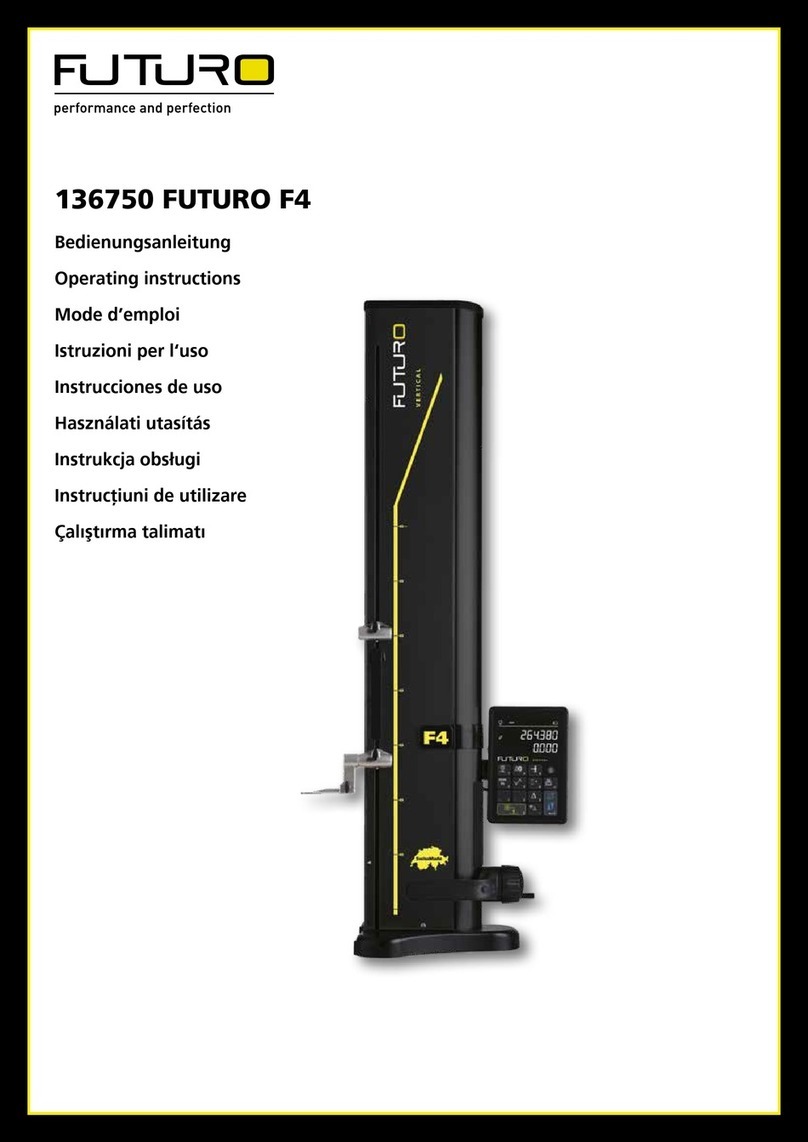
FUTURO
FUTURO F4 operating instructions
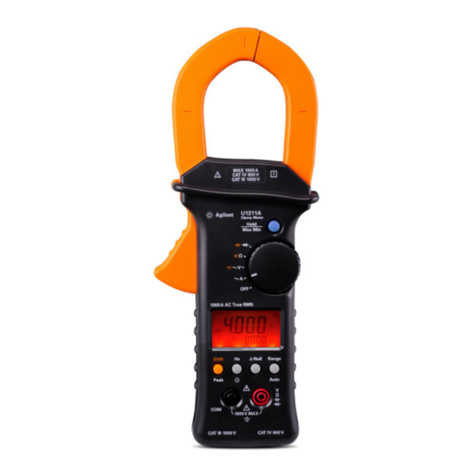
Agilent Technologies
Agilent Technologies U1211A quick start guide
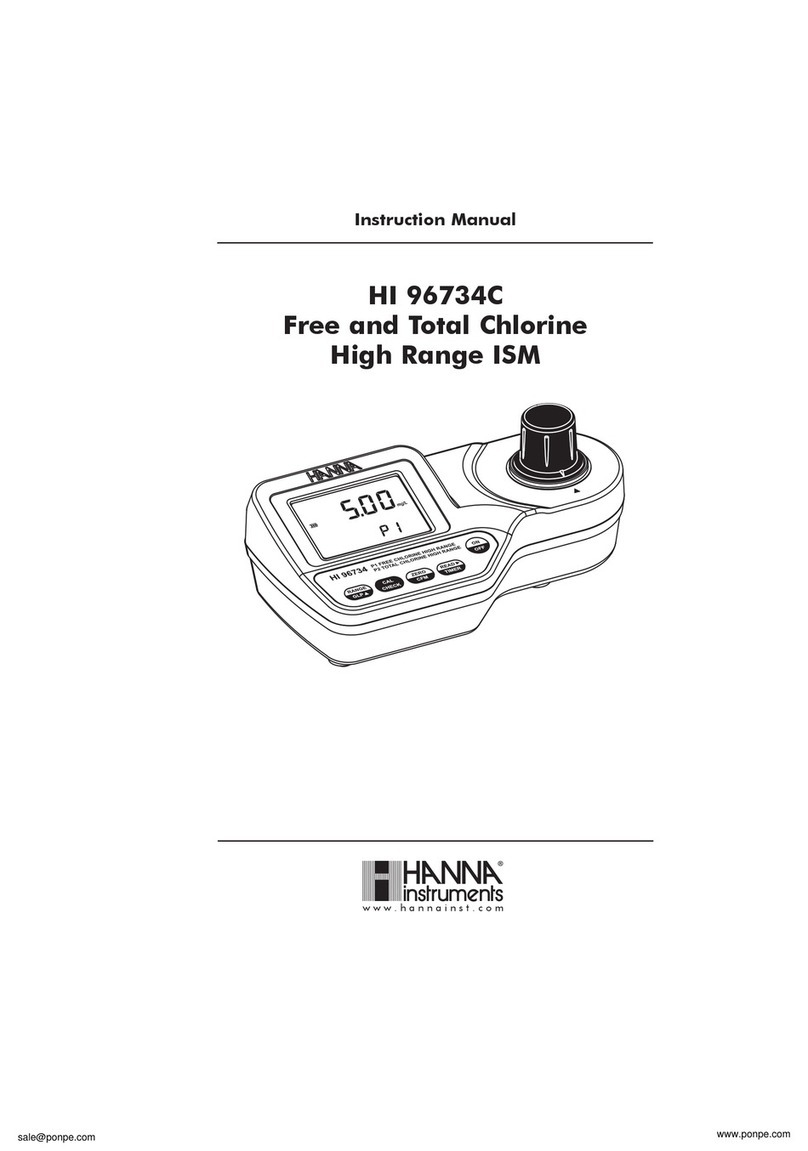
Hanna Instruments
Hanna Instruments HI 96734C instruction manual
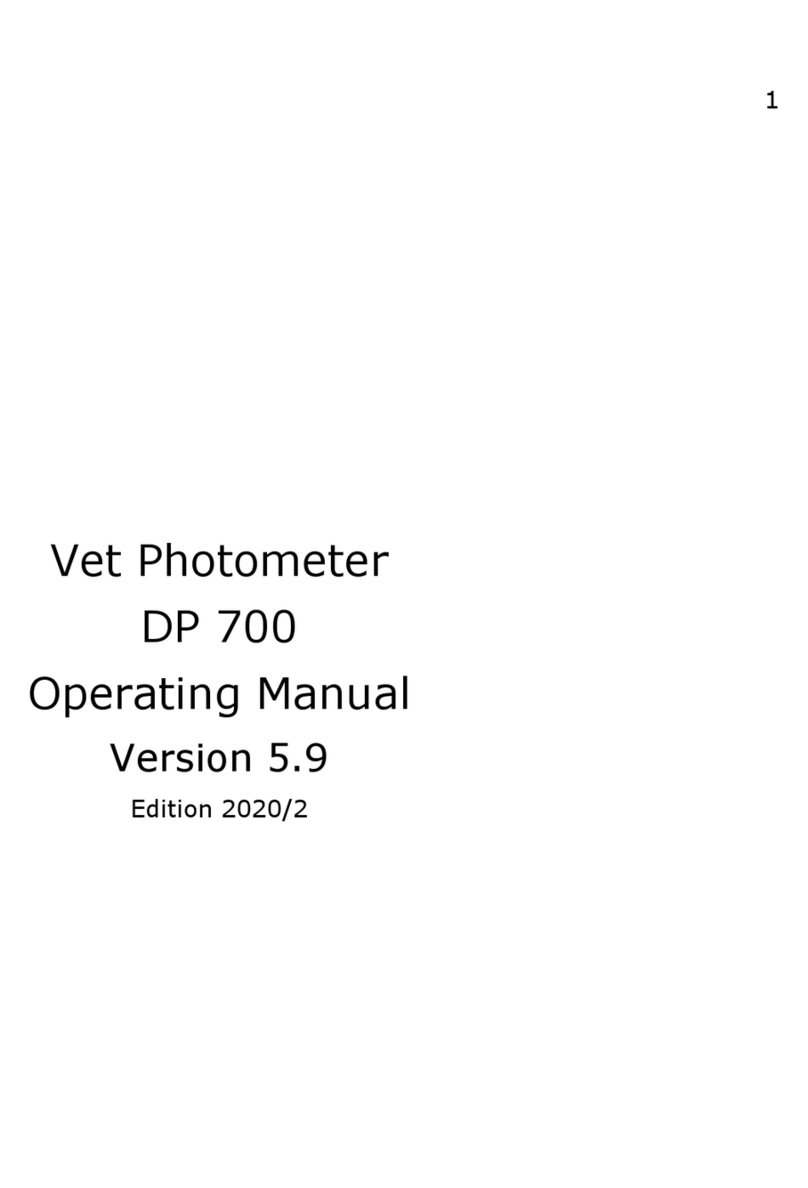
Diaglobal
Diaglobal DP 700 operating manual

Dynojet
Dynojet 200i installation guide
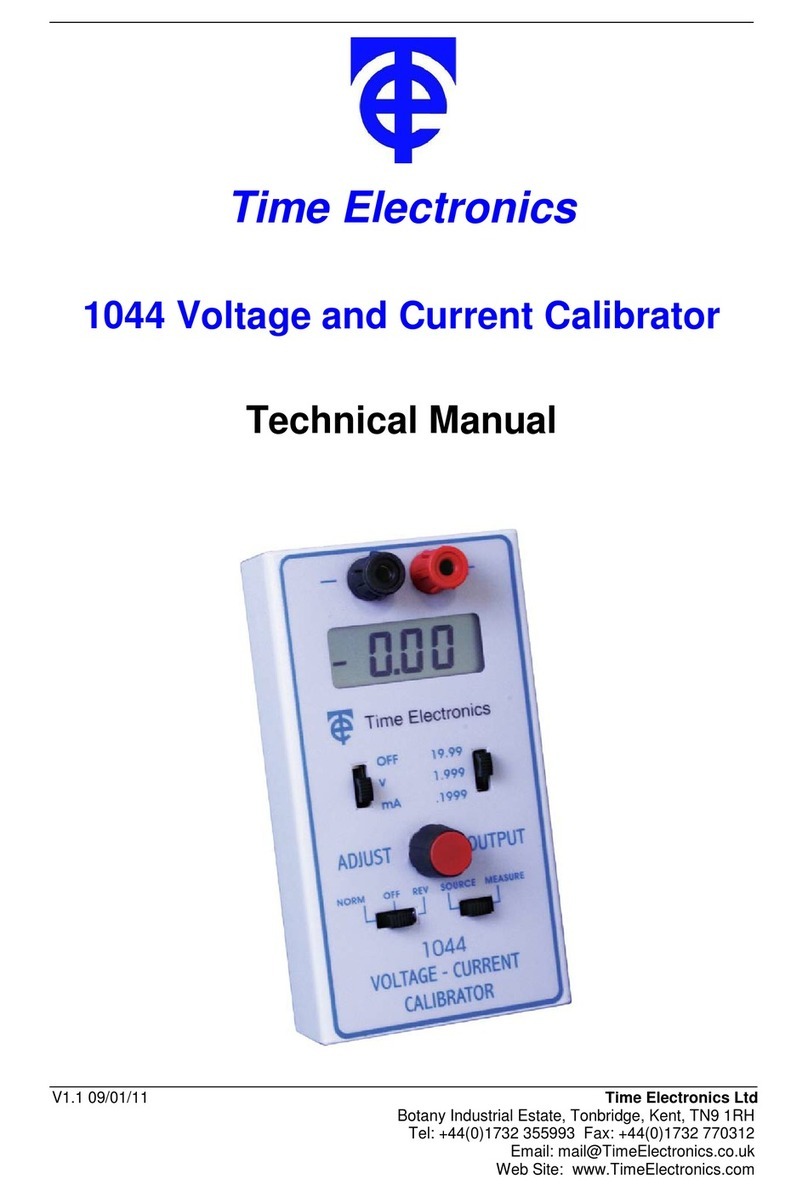
Time Electronics
Time Electronics 1044 Technical manual



